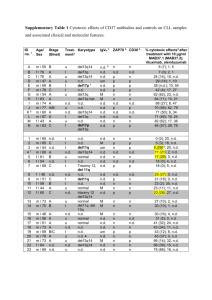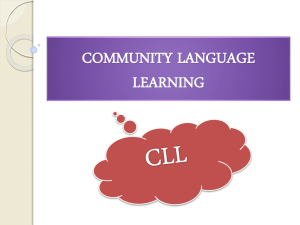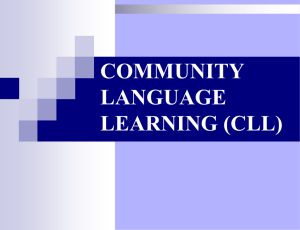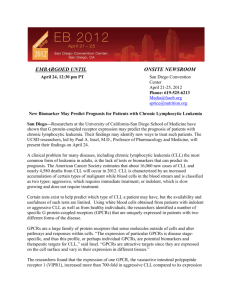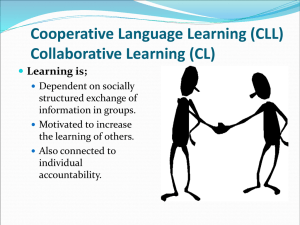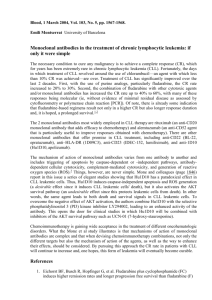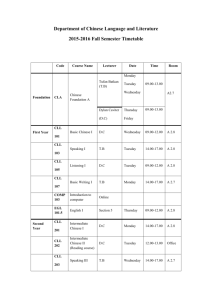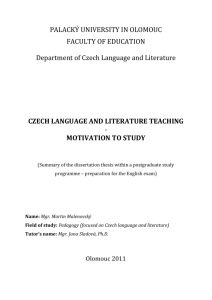presentation-Yakhnenko
advertisement
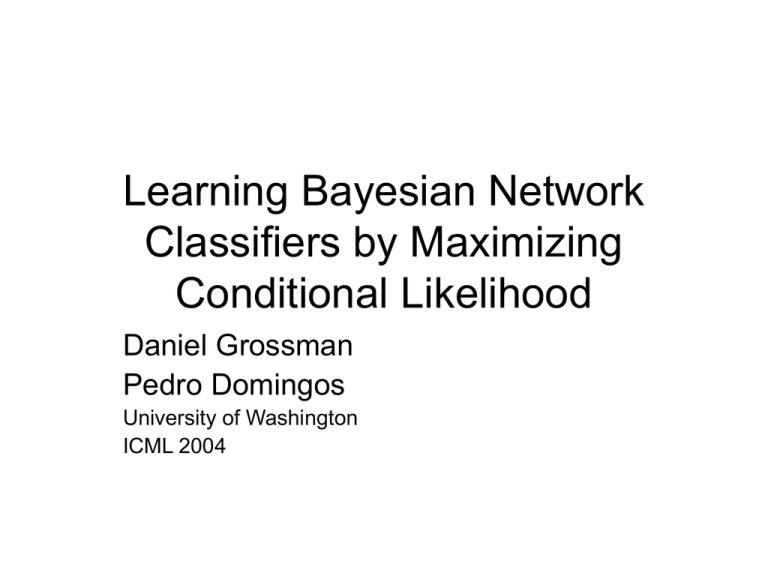
Learning Bayesian Network Classifiers by Maximizing Conditional Likelihood Daniel Grossman Pedro Domingos University of Washington ICML 2004 Outline • Bayesian Networks for Classification • Generative vs. Discriminative training of the classifiers • Bayesian Network structure search that optimizes conditional likelihood • Experiments • Conclusion Background • Naïve Bayes – special case of a BN is an accurate classifier, and outperforms BN (Friedman 1997) • BN optimizes join-likelihood function, not classconditional • Class-conditional likelihood (CL) function optimization does not have simple closed form solution (Friedman) • CL can be optimized by gradient ascent, but this may not be computationally feasible Motivation for improving BN classifier • Sometimes high accuracy is not enough, and we are interested in accurate class probabilities – Ranking of class probabilities – Cost-based classification Learning BNs – scoring functions • Need to learn structure and parameters • Maximizing log-likelihood of the data • Add complexity penalty: MDL minimizes • Bayesian Score BN Classifier • Want to maximize probability of class given features (predictive attributes) • For classification purposes want to maximize class conditional log-likelihood instead of full log-likelihood Problem with maximizing LL • Leads to underperformance of the classifiers since the contribution of the CLL will most likely be overruled by • Want to maximize CLL directly, but cannot decompose • Solution – gradient ascent – when the structure is known, can estimate parameters effectively (Greiner and Zhou, 2002) – when the structure is unknown, computationally infeasible, because need to compute gradient for each structure candidate Discriminative vs. Generative models To classify a new instance, want to know P(Y|X) Discriminative models assume some functional form for P(Y|X) and estimate parameters to maximize it from data Generative models, assume probability distribution for data to estimate joint probability P(X,Y) and compute P(Y|X) by Bayes rule. In practice with enough data discriminatively trained classifiers can significantly outperform generatively trained classifiers if the goal is classification accuracy. BNC Algorithm • Similar to hill-climbing proposed by Heckerman (1995), but uses CLL as an objective function – Start with empty network, at each step consider adding a new arc, and reversing/deleting each current arc without introducing cycles – Pre-discretizes continuous values BNC Versions • BNC-nP – To avoid over fitting, each variable is limited to n parents. Parameters then would be set to their maximum likelihood (not CLL!) values. CLL is used to score the network. – Rationale – computing LL parameters is very fast, and for an optimal structure are asymptotically equivalent to maximum CLL • BNC-MDL – Similar to BNC-nP, only uses scoring function – where m is the number of parents, and n is the size of the data. Experiments • Full optimization – Each parameters is set to its locally maximum CLL value by conjugate gradient. Parameters are initialized with likelihood function value. 2-fold cross validation used to prevent overfitting. • Speed-ups: – Only use 200 sampled for gradient, and entire data for fitting final parameters – Restrict the iterations gradient can take – Still takes a long time to run (1-2 hours small datasets, 5 hours medium dataset, on one dataset didn’t stop after 2 days) Experiments • 25 benchmark datasets from UCI Machine Learning repository, the same as those used by Friedman et. al. • 5-fold cross-validation • C4.5, Naïve Bayes, TAN, Hill-Climbing Greedy BN, Maximum Likelihood using MDL score, maximum likelihood restricting to 2 parents, NB and TAN with parameters optimized to CLL. Results (error rate) Future Work and Conclusion • Future Work – Experimenting in the domain with large number of attributes – Developing heuristics for full optimization of CLL – Developing methods for handling over fitting – Handling missing data – Undiscretizing continuous variables – Extending their treatment to maximizing CLL on arbitrary query • Conclusion – Presented classifier effectively searches for the structure that optimizes CLL producing good results


